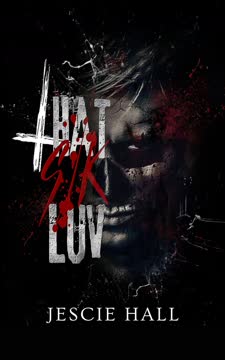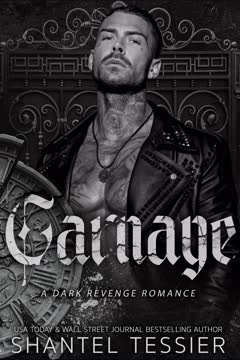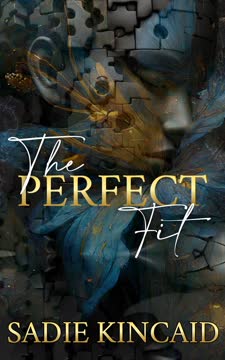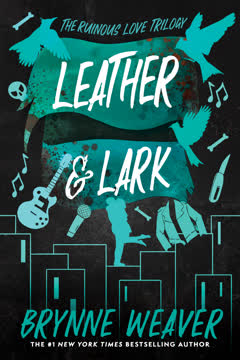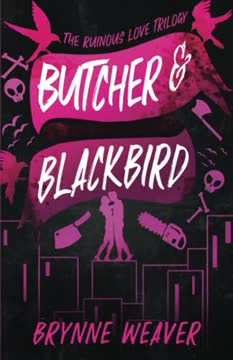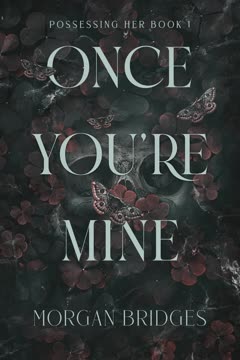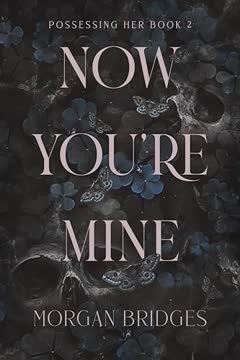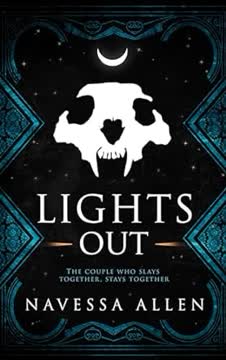Plot Summary
Rain and Ruin
Kayla stands at her husband Michael's funeral, the rain mirroring her devastation. She is hollowed by loss, her world reduced to a fog of pain and emptiness. The rituals of mourning feel meaningless, and she is left alone in a decaying Victorian house on Bainbridge Island, Washington. The house, once a symbol of hope, now leaks and creaks, echoing her internal collapse. Grief is not just emotional but physical—headaches, fatigue, and a sense of being unmoored from reality. The first sign of something amiss arrives: a mysterious letter from a man named Dante, sent from prison, promising to wait for her forever. The letter's arrival is unsettling, hinting at a presence that will not let her grieve in peace.
Letters from the Void
Kayla receives more letters from Dante, each more intimate and unsettling than the last. The letters are brief, cryptic, and signed with a name that feels both familiar and alien. Dante claims to know her deeply, describing her fears and desires with uncanny accuracy. The letters arrive in inexplicable ways, sometimes appearing inside her locked house. Kayla's anxiety grows as she wonders if she is being watched or if her mind is unraveling. The letters' tone is both longing and ominous, blurring the line between comfort and threat. Kayla's attempts to rationalize the situation—scam, mistake, or madness—only deepen her sense of isolation and dread.
The Stranger's Shadow
The house's problems multiply: leaks, electrical malfunctions, and unexplained noises. Kayla hires Aidan, a brooding, tattooed roofer with a rough exterior and a haunted past, to fix the roof. Their first encounters are fraught with tension, sarcasm, and a strange, magnetic pull. Aidan is blunt, capable, and unafraid to challenge Kayla's defenses. Their banter is laced with flirtation and mutual wariness. As Aidan works on the house, the chemistry between them intensifies, offering Kayla a distraction from her grief and the growing sense that something is deeply wrong in her home.
Aidan's Arrival
Kayla and Aidan's relationship quickly escalates from antagonism to raw, physical passion. Their connection is electric, marked by dominance, submission, and a hunger for escape from their respective pain. Aidan's presence is grounding yet dangerous, and Kayla finds herself surrendering to desires she never knew she had. Their nights together are intense, blending pleasure with catharsis. Yet, beneath the surface, both are haunted—Kayla by her past and the letters, Aidan by secrets he refuses to share. Their intimacy becomes a refuge, but also a crucible for the truths neither is ready to face.
Haunted by Grief
The house becomes increasingly hostile: lights flicker, objects move, and Kayla experiences lapses in memory. She sees a little blond boy playing in the yard, but he vanishes without a trace. The security cameras record only static. Kayla's sense of reality frays as she questions whether she is haunted by ghosts, her own mind, or both. She seeks help from Fiona, her housekeeper, and even a psychic, but the answers only deepen the mystery. The letters from Dante continue, their tone shifting from longing to urgent, as if trying to warn her of something she cannot see.
The Unseen Boy
The apparition of the little boy becomes more frequent and disturbing. He appears inside the house, always just out of reach, his presence both innocent and chilling. Kayla is tormented by the thought that he might be the child she lost in a miscarriage, or a symbol of her own lost innocence. The boy's fear of her is palpable, and his appearances coincide with spikes in the house's supernatural activity. Kayla's attempts to communicate with him fail, leaving her feeling more isolated and desperate for answers.
Seduction and Surrender
Kayla and Aidan's relationship deepens, moving beyond physical attraction to emotional vulnerability. They share their traumas—Aidan's violent childhood and time in prison, Kayla's failed marriage and miscarriage. Their love becomes a lifeline, but also a source of fear, as both are terrified of losing each other. The house's haunting intensifies, mirroring their internal struggles. Kayla's guilt over moving on from Michael, and her fear of being unworthy of happiness, threaten to destroy the fragile peace she has found with Aidan.
The House's Secrets
Desperate for answers, Kayla agrees to a séance with Fiona and her medium sister, Claire. The ritual is terrifying: objects fly, lights explode, and a message is scrawled—REVENGE. The spirit's anger is palpable, but its target is unclear. Kayla is forced to confront the possibility that the haunting is not random, but personal. The séance leaves her shaken, but also determined to uncover the truth about the house, the letters, and her own past. The boundaries between the living and the dead blur, and Kayla senses that the answers she seeks are closer than she dares to imagine.
Ghosts in the Walls
Kayla's investigation into the house's history and the identity of Dante leads to a series of shocking discoveries. The names on the property records do not match her own. People she thought were real—her handyman, her therapist—turn out to be ghosts or figments. The letters from Dante are revealed to be anagrams for Aidan's name. The realization dawns that she is not just haunted by ghosts—she is one. The memories she has clung to are revealed as illusions, constructed to protect her from a trauma too great to bear.
The Séance
In a climactic séance, Kayla is forced to face the truth: she is dead, murdered by her husband Michael, who also killed Aidan. The haunting, the letters, the boy, and the man in the trench coat are all fragments of her shattered psyche, echoes of the violence that ended her life. The séance becomes an exorcism of denial, as Kayla's memories return in a flood of pain and clarity. The house, the letters, and the ghosts are revealed as manifestations of her need for closure and justice.
The Truth Unraveled
Kayla relives the night of her death: Michael's psychotic break, Aidan's sacrifice, her own drowning. The truth is unbearable, but also liberating. She understands that her haunting was not a punishment, but a plea for recognition and release. The boy is the child she lost, the man in the trench coat is Michael, and Dante/Aidan is her lost love, waiting for her on the other side. The final memory is both a reckoning and a farewell, as Kayla accepts her fate and prepares to move on.
Death's Doorstep
With the truth acknowledged, the storm within Kayla subsides. The house is calm, the ghosts at peace. Kayla is greeted by Aidan, radiant in the dawn light, waiting for her at the threshold of the afterlife. Their reunion is tender and triumphant, a testament to the power of love to transcend even death. Together, they step into the light, leaving behind the pain and betrayal that bound them to the world. The haunting is over, but their story continues beyond the veil.
The Final Memory
In the aftermath, Michael is institutionalized, haunted by visions of Kayla and Aidan. His narcissism and refusal to accept responsibility are laid bare in interviews with a forensic psychiatrist. The supernatural justice Kayla and Aidan sought is delivered—not through violence, but through the torment of Michael's own mind. The cycle of pain is broken, and the dead find peace, while the living are left to reckon with the consequences of their actions.
The Storm Within
The narrative reflects on the nature of grief, memory, and the stories we tell ourselves to survive. Kayla's journey is one of self-discovery, acceptance, and the search for meaning in the face of unimaginable loss. The haunting is both literal and metaphorical, a manifestation of unresolved trauma and the need for closure. The story explores the limits of love, the dangers of denial, and the possibility of redemption, even after death.
Love Beyond the Veil
Kayla and Aidan's love story is reimagined as a journey through hell, purgatory, and paradise. Their bond endures beyond death, offering hope that even the most broken souls can find healing and connection. The afterlife is depicted not as an end, but as a new beginning—a place where love, forgiveness, and understanding are possible. The narrative closes with the promise of eternal togetherness, a final act of defiance against the darkness that sought to destroy them.
The Last Goodbye
The living—Fiona, Claire, the Wainwrights—are left to rebuild in the wake of tragedy. Kayla's story becomes a cautionary tale about the dangers of ignoring mental illness, the importance of seeking help, and the necessity of facing the truth, no matter how painful. The house, once a place of sorrow, is now a sanctuary for new beginnings. The dead are remembered, honored, and finally released.
Justice for the Dead
The final chapter is one of justice and peace. Michael faces the consequences of his actions, tormented by the ghosts of those he wronged. Kayla and Aidan, united in the afterlife, watch over the living, their love a beacon of hope. The story ends with the dawn—a symbol of renewal, forgiveness, and the enduring power of love to conquer even death.
Characters
Kayla Reece
Kayla is the protagonist, a woman shattered by the loss of her husband and the collapse of her life. Her journey is one of grief, confusion, and ultimately, revelation. She is creative, sensitive, and deeply empathetic, but also plagued by self-doubt and guilt. Her relationships—with Michael, Aidan, and the spectral boy—reflect her longing for connection and her fear of abandonment. As the story unfolds, Kayla's perception of reality fractures, revealing her as both victim and ghost, trapped by trauma and denial. Her arc is one of self-discovery, acceptance, and the search for peace, culminating in her reunion with Aidan beyond the veil.
Aidan Leighrite / Dante
Aidan is Kayla's lover and the embodiment of safety, passion, and redemption. He is rugged, capable, and emotionally scarred by a violent past and time in prison. His love for Kayla is fierce and unconditional, offering her a lifeline out of despair. As Dante, he reaches out to her from beyond, guiding her toward the truth and waiting patiently for her to join him. Aidan's character is defined by his willingness to sacrifice himself for those he loves, his struggle with vulnerability, and his ultimate role as Kayla's guide through the afterlife. His presence is both grounding and transcendent, symbolizing the enduring power of love.
Michael Reece
Michael is Kayla's husband, a once-promising academic whose mind is ravaged by untreated paranoid schizophrenia and narcissism. His descent into madness is marked by violence, delusion, and a refusal to accept help. Michael's actions—culminating in the murder of Aidan and Kayla—are driven by a toxic mix of jealousy, fear, and grandiosity. He is both victim and perpetrator, his illness compounding his moral failings. In death, he is tormented by the ghosts of those he wronged, his inability to accept responsibility ensuring his own damnation. Michael's character is a cautionary portrait of the dangers of untreated mental illness and unchecked ego.
Fiona
Fiona is Kayla's housekeeper and a subtle medium, attuned to the supernatural currents in the house. She is warm, no-nonsense, and deeply compassionate, offering Kayla both practical support and spiritual insight. Fiona's Scottish heritage and family history of mediumship position her as a bridge between the living and the dead. She is instrumental in guiding Kayla toward the truth, orchestrating the séance and providing comfort in moments of crisis. Fiona's presence grounds the narrative, reminding both Kayla and the reader that healing requires both courage and community.
Claire
Claire is Fiona's twin sister and a professional medium, skilled in communicating with spirits. She is calm, methodical, and empathetic, leading the séance that forces Kayla to confront her own death. Claire's role is that of a catalyst, pushing Kayla past denial and into acceptance. Her understanding of the spirit world is both practical and philosophical, offering a framework for Kayla's journey from confusion to clarity. Claire's character embodies the importance of facing the truth, no matter how painful, and the necessity of helping others find their way to peace.
The Little Boy
The spectral boy who appears throughout the story is a manifestation of Kayla's lost child, her innocence, and her longing for what might have been. His presence is both comforting and unsettling, a reminder of the pain that lingers after tragedy. The boy's fear of Kayla reflects her own fear of facing the truth about her past and her death. Ultimately, he serves as a guide, leading Kayla toward acceptance and release.
The Man in the Trench Coat
The figure of the man in the trench coat is a recurring apparition, representing Michael's descent into psychosis and his role as both abuser and murderer. His appearances are harbingers of violence and reminders of the unresolved trauma that binds Kayla to the house. He is both a literal ghost and a symbol of the darkness that must be confronted and overcome.
Eddie the Handyman
Eddie is a seemingly helpful handyman who offers advice and comfort to Kayla, but is later revealed to be a ghost himself. His presence underscores the porous boundary between the living and the dead in Kayla's world, and the extent to which she is surrounded by echoes of the past. Eddie's character highlights the dangers of denial and the importance of seeking help from those who truly understand.
Deb and Jake
Deb and Jake are Aidan's friends, a happily married couple who offer Kayla a glimpse of what love and partnership can be. Their warmth, humor, and stability contrast with the chaos of Kayla's life, serving as a reminder that healing and happiness are possible. Their presence in the narrative grounds the supernatural elements, providing a touchstone of normalcy and hope.
The Wainwrights
Sandy, David, and their son Bennett are the new family living in Kayla's former home. Their presence represents the possibility of new beginnings and the resilience of the living in the face of tragedy. Their interactions with Fiona and the haunted house serve as a backdrop for Kayla's journey toward acceptance and release.
Plot Devices
Unreliable Narration and Fragmented Memory
The narrative is structured around Kayla's unreliable perception, shaped by grief, trauma, and her own death. The story unfolds in a nonlinear fashion, with memories, hallucinations, and supernatural events blending together. This device keeps the reader off-balance, mirroring Kayla's confusion and gradually revealing the truth as she is able to face it. The use of letters, séances, and shifting perspectives deepens the sense of mystery and suspense, while also allowing for moments of revelation and catharsis.
Anagrams and Symbolic Names
The use of anagrams—Dante Alighieri as Aidan Leighrite—serves as both a clue and a metaphor for the hidden connections between characters and events. The names themselves are laden with literary and mythological significance, referencing Dante's journey through hell and the Greek myth of Eurydice and Orpheus. These devices foreshadow the story's central twist and reinforce the themes of love, loss, and the search for meaning beyond death.
Supernatural Phenomena and Haunting
The haunting of the house—flickering lights, moving objects, ghostly apparitions—is both literal and symbolic. The supernatural events reflect Kayla's internal turmoil and her inability to accept her own death. The séances, psychic readings, and encounters with ghosts serve as catalysts for self-discovery and healing, pushing Kayla to confront the truth she has been avoiding.
Letters and Communication Across Realms
The letters from Dante/Aidan are a central plot device, allowing for communication between the living and the dead. They serve as both comfort and warning, guiding Kayla toward the truth and offering her a lifeline out of despair. The letters' cryptic nature and shifting tone mirror Kayla's journey from confusion to clarity, and their eventual revelation as messages from Aidan underscores the enduring power of love.
Foreshadowing and Symbolism
The narrative is rich with foreshadowing—objects out of place, names that don't match, characters who vanish or are revealed as ghosts. Symbols such as the buffalo nickel, the life jacket, and the recurring storm serve as metaphors for loss, protection, and the turmoil within. The use of literary and mythological references deepens the story's resonance, inviting the reader to look beyond the surface for deeper meaning.
Analysis
Pen Pal by J.T. Geissinger is a masterful blend of psychological thriller, supernatural mystery, and dark romance. At its core, the novel is an exploration of grief, trauma, and the stories we tell ourselves to survive the unbearable. Through Kayla's unreliable narration and the gradual unraveling of her reality, the book examines the ways in which denial, guilt, and longing can trap us in cycles of pain. The supernatural elements—hauntings, séances, letters from the dead—are not just devices for suspense, but metaphors for the unresolved wounds that bind us to the past. The love story between Kayla and Aidan is both a source of hope and a crucible for healing, demonstrating that even in the aftermath of violence and betrayal, connection and redemption are possible. The novel's structure—mirroring Dante's journey through hell, purgatory, and paradise—invites readers to consider the possibility of life after death, not just in a literal sense, but as a metaphor for transformation and renewal. Ultimately, Pen Pal is a story about facing the truth, letting go of the past, and finding peace—both for the living and the dead. Its lessons are clear: healing requires courage, love endures beyond the grave, and the only way out of the storm is through.
Last updated:
Review Summary
Pen Pal has divided readers with its unconventional plot and marketing. Many praise its steamy scenes, unpredictable twists, and ability to keep them guessing. However, others criticize the misleading romance label, lack of trigger warnings, and disappointing ending. The book's paranormal elements and non-traditional structure surprised some readers. While some found it a captivating, mind-bending experience, others felt it was poorly executed and overhyped. The intense debate around genre classification and content warnings highlights the book's controversial nature.
Similar Books
Download PDF
Download EPUB
.epub digital book format is ideal for reading ebooks on phones, tablets, and e-readers.

